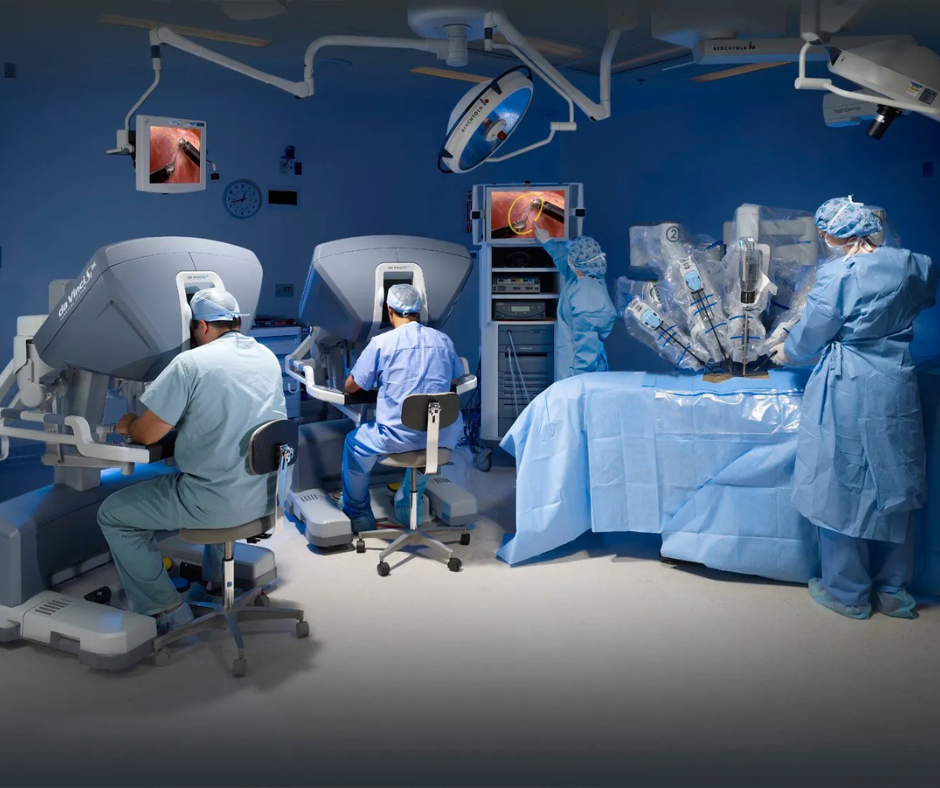Imagine this — you’re moments away from surgery, and your doctor smiles and says, “A robot will be assisting me today.” You might raise an eyebrow. A robot? In the operating theatre? Welcome to the world of robotic surgery, where advanced technology and human precision work side by side. What once sounded like science fiction is now transforming modern medicine — offering surgeons enhanced control and patients faster recovery, smaller scars, and a new level of confidence in the hands of both human and machine.
Yet this isn’t science fiction anymore. From major hospitals in the UK to world-class medical centres in Asia, robotic surgery is becoming part of everyday healthcare. It’s faster, gentler, and more precise than traditional methods — and for patients, that can mean less pain, fewer complications, and a quicker path back to life.
As health systems everywhere juggle bigger workloads and higher expectations, robotic surgery is quietly stepping in to help — combining human skill with machine precision.
What Exactly Is Robotic Surgery?
Here’s the truth: robots aren’t operating on people by themselves. Every move comes from a human hand — guided through advanced robotic systems that respond to the surgeon’s exact touch.
Picture a surgeon sitting at a console, looking through a high-definition 3D screen that shows a magnified view inside your body. The system translates their hand movements into tiny, precise motions — smaller and smoother than human fingers could manage on their own.
It’s a bit like giving surgeons superpowers — helping them move with a level of accuracy that’s simply not possible in traditional surgery.
Systems like the da Vinci Surgical System are leading the way, but the technology is evolving fast. Newer platforms are becoming smaller, smarter, and even more intuitive, allowing surgeons to work with greater confidence and control.
Why Hospitals Are Turning to Robots
Behind the scenes, hospitals are under immense pressure: more patients, fewer staff, tighter budgets. Robotic systems are helping them find a balance.
They make surgeries more efficient, reduce recovery times, and free up hospital beds sooner. For patients, that means getting home faster — and for doctors, it means more time for what truly matters: care and connection.
The numbers speak volumes. In the UK, robot-assisted surgeries are expected to rise sharply by 2035. In South Korea and India, hospitals are already using robotics to stay at the cutting edge of patient care. Around the world, medical schools are now training the next generation of surgeons to think — and operate — robotically.
How It Benefits You
For you, the patient, robotic surgery can make all the difference between a long recovery and a smoother return to daily life.
- Faster recovery: Smaller incisions, less blood loss, and fewer stitches mean you’ll likely be back on your feet sooner.
- Less pain, less scarring: Because the surgery is minimally invasive, it tends to hurt less and leaves barely visible scars.
- Lower risk of complications: Precision reduces the chance of infections or surgical errors.
Better access to care: In regions where specialised surgeons are scarce, robotic systems can help bridge the gap.
Studies from respected institutions consistently back this up, showing shorter hospital stays and safer outcomes for patients.
Where Robotic Surgery Is Already Making a Difference
You might be surprised by just how many types of surgery now use robotic support:
- Prostate and bladder care: Surgeons can work around delicate nerves with greater accuracy, protecting vital functions.
- Women’s health: From removing fibroids to hysterectomies, robotic precision allows gentler, quicker recovery.
- Digestive system surgeries: Smaller cuts and clearer views make colon and rectal surgeries less invasive.
- Joint and bone repair: For knee or hip replacements, robotics ensures perfect alignment — helping you move more freely afterwards.
- Ear, nose, and throat procedures: Even intricate sinus or throat surgeries are now being performed with minimal discomfort.
And the list is growing. Emerging uses in cardiac and paediatric surgeries show how much potential lies ahead.
The Future of Robotic Surgery
We’re only at the beginning of this story. Every year brings smaller, smarter, more affordable systems. Some are even portable, designed for hospitals in rural or low-resource settings.
Imagine a world where every patient, regardless of their location, can access top-quality surgery. That’s the promise robotic systems are working toward. And as more surgeons are trained in these technologies, that future is coming closer than most people realise.
Key Takeaways
Robotic surgery isn’t replacing surgeons — it’s elevating them. By combining human intuition with machine precision, it’s redefining what’s possible in healthcare.
Faster recovery. Fewer complications. Gentler healing.
As hospitals everywhere continue to embrace robotic systems, you’ll hear more real stories of patients waking up not just to better outcomes, but to a new kind of confidence in modern medicine — where human care and technology move as one.



